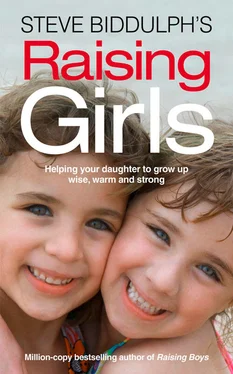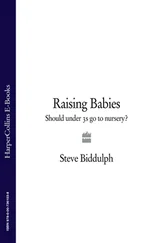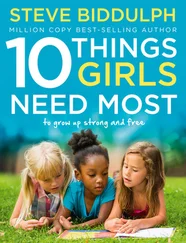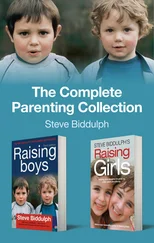Learning to Explore
(2–5 years)
One day your baby is on her feet, toddling, then suddenly nothing in your life is ever the same! No cat is safe, no goldfish, and no precious vase on a coffee table. (Though even crawlers could probably have got to those.)
A girl between two and five has one single purpose: to explore. This is the age when Girls Just Want to Have Fun. She does this with huge determination, and her will is strong. Being stopped annoys her greatly. Of course, sometimes she has to be stopped, but hopefully with distraction, or diversion, or sometimes with a cry of ‘hands off’, along with a scowly face. But in the main, exploring is what you want her to do, and giving her lots to explore makes for a happier and smarter girl.
Because she is a girl, there are extra reasons why this stage matters; in fact how you handle it is crucial. This is the time to give her the greatest range of abilities and areas of confidence that you possibly can. From nature to art to athletics, it all gets its start between one and five .
Sometimes the limits we put on girls are totally unconscious. Just recently, a remarkable study was carried out into the way we talk to toddlers. It was discovered that without knowing it, parents talk with a different focus, and about different things, depending on the gender of their child. 7 Конец ознакомительного фрагмента. Текст предоставлен ООО «ЛитРес». Прочитайте эту книгу целиком, купив полную легальную версию на ЛитРес. Безопасно оплатить книгу можно банковской картой Visa, MasterCard, Maestro, со счета мобильного телефона, с платежного терминала, в салоне МТС или Связной, через PayPal, WebMoney, Яндекс.Деньги, QIWI Кошелек, бонусными картами или другим удобным Вам способом.
If he’s a little boy, they say,
‘Look! There are THREE rabbits in the field over there.’
If she’s a girl, they say,
‘Look at those CUTE rabbits!’
If it’s a boy they say, ‘Wow, you’ve made that tower TEN BLOCKS HIGH!’
If it’s a girl they say, ‘What a BEAUTIFUL tower you’ve made.’
Can you spot the difference? Boys = numbers, girls = feelings. It’s totally unconscious, but it has huge implications. And what else are we changing? Nobody really knows.
Does this matter? Well, it’s long been known that even though girls are equally able at maths, most boys enjoy maths more and go further with this subject at school, and further into those careers that need some maths (which includes a lot of the best-paid jobs). Girls are often quite frightened by maths. (And to be honest, some girls are frightened by scary male maths teachers, of whom there seemed to be a lot, at least when we were kids.)
I am sure that no parent ever sets out to disadvantage their girls around useful number skills, yet we unconsciously start making the boys practical and the girls emotionally focused.
So here’s a suggestion, perhaps we ought to reverse this . Girls are well wired for being emotionally aware; we can encourage that, but we can also spice our chatter to them with lots of number stuff. ‘How many rabbits can you see?’ And our boys are already wired for spatial knowledge, so ‘those rabbits are nervous, look, they’ve stuck their ears up to listen for us’ can get them thinking about feelings. No need to get obsessive about it, I am willing to make a bet that just reading this has already got you thinking about what you say .
Talk to your toddler daughter about numbers, and counting, and praise her for good engineering with her Lego bricks. Don’t ever assume ‘girls don’t …’ anything, because they can, and they will, if we believe and encourage them early on. Sally Ride, the first American woman astronaut, dedicated her life after space to getting girls to study science. It creates more opportunities for them and doubles the talent pool of good scientists, which we definitely need.
Because learning and fun are the same thing for a happy child, in the years from one to five your daughter will do more self-educating than thousands of pounds in school fees could ever buy for her later on. It’s very sad when parents are too busy earning in the toddler years to have time to play and do things with their littlies. And it’s pretty tragic if when those kids actually get to school, the love of exploring has died inside them.
Kids learn to love life and learning from the adults around them. On top of their natural curiosity, they will also follow ours and catch our enthusiasm. Watch an experienced mother or father on a bus with a toddler and you will see that they point things out to them with feeling . If you are excited (or even pretend to be, just a little) she will catch your mood.
SECURITY LEADS TO EXPLORING
Though your little girl is no longer a baby, that doesn’t mean she is over the ‘Am I loved and safe?’ stuff. In fact this still applies just as much. The reason is that secure toddlers explore the most . The very first experiments in child development, carried out by people like John Bowlby and the amazing explorer/researcher Mary Ainsworth, found that babies who are ‘securely attached’ (i.e. love and trust their mum or dad to be there) are the ones who go further and are more adventurous. 8 Конец ознакомительного фрагмента. Текст предоставлен ООО «ЛитРес». Прочитайте эту книгу целиком, купив полную легальную версию на ЛитРес. Безопасно оплатить книгу можно банковской картой Visa, MasterCard, Maestro, со счета мобильного телефона, с платежного терминала, в салоне МТС или Связной, через PayPal, WebMoney, Яндекс.Деньги, QIWI Кошелек, бонусными картами или другим удобным Вам способом.
Toddlers who are not trusting of their parent or carer to be there for them will cling more and be less willing to go and play with a new toy or a new playmate. (Don’t feel bad if your toddler is still clingy, though, as there is also a fair bit of temperament in this, some toddlers just are more cautious than others.)
What makes them most secure is knowing that you are always around for them.
So they can take that as a given, and spend their emotional energies on new excitements. If they are already anxious about life, new things are just too much to handle.
Think for a minute about your attitude to insects, bugs or nature in the raw. If you say ‘Ick, horrible ants, aargh, get away!’ then of course your daughter will be scared of them too. But if you say ‘wow, have a look at this …’ she will catch your attitude. It doesn’t mean she should poke into spider’s nests or pick up death adders, but you can teach her a sensible interest and she will be fascinated for the rest of her life.
It’s the same with machines, the insides of cars and computers, garden sheds, tools and making stuff, craft work, music making, art and sculpture, cooking, dancing, loving being in the forest or at the beach, these are all ‘caught’ from grown-ups around you.
Lots of Arty Stuff Is Free
The best learning aids for your one-to-five-year-old daughter are simple and cheap. Not fancy ‘educational’ toys or gadgets which provide all the action with batteries or flashing lights; the simpler, plainer and tougher, the better.
Читать дальше












